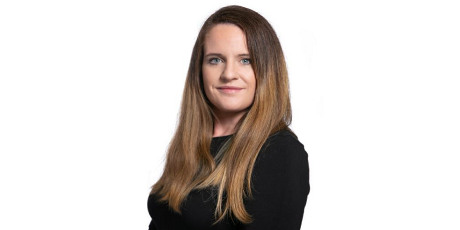When COVID-19 surfaced, we felt we could provide some expertise in tracking the disease 01 Jul 2020

Dr Jean O’Dwyer is a lecturer in Environmental Science at the School of BEES, and Principal Investigator in Environment and Health Research at the Environmental Research Institute. Here, she shares a little bit about her fascinating research and its impact.
Could you explain a little bit about your research?
I am an Environmental Scientist primarily interested in how the natural environment impacts human health. Most of my work involves assessing contaminants in drinking water and modelling risk factors to try and predict areas more prone to contamination. I am also interested in environmental epidemiology and how disease transmission is facilitated through environmental sources.
How did you become interested in this work?
I have always been interested in the natural environment and in particular, environmental pollution and climate change. These issues are so broad and sometimes overwhelming that it is difficult for people to engage with them. So, I started looking at how the environment can impact human health, which is a much more tangible issue to deal with. The rationale is that if people know that the natural environment and their own health are intrinsically linked, they may become more interested in the former!
What excites you about your work?
I think the most exciting aspect is the applied nature of my research – you actually feel that what you are doing matters and can improve things. When you get a notification saying you have been cited in a policy document, there is a great sense of accomplishment; it’s exciting to feel that your research is actually being put into practice.
Could you share one statistic or piece of information you find fascinating?
Based on our findings, people in Ireland who use a private well as a drinking water source are almost 19 times more likely to contract a waterborne infection called Verotoxigenic E. coli (VTEC). Ireland has the highest incidence rate of this infection in Europe, and it’s now apparent that private well utilisers are particularly at risk.
You have developed an app to predict groundwater quality. How significant an impact can this have on the day-to-day lives of landowners and farmers?
The app (GRAppLE- groundwater risk application for local evaluations) hides our microbial-risk algorithm behind a user-friendly interface so people can assess the geo-specific risk of having contaminated well water. The hope is that this will increase the level of personal stewardship among well owners, and encourage them to have their water tested more regularly and install a treatment system, if required. It is very much a bottom-up solution to a national problem, whereby we put science directly in people’s hands and allow them to make informed decisions to protect their health.
Could you share some details on your Covid-19 tracking research and how you hope this will help in the fight against the current pandemic?
A lot of the work we do focuses on epidemiology and risk, so when COVID-19 surfaced, we felt we could provide some expertise in tracking the disease. We are retrospectively and prospectively modelling COVID-19 outbreak occurrence relative to multiple factors ranging from socio-demographics and population movement to weather. We are applying spatial cluster analyses coupled with machine learning to literally track the disease and ‘predict’ the impacts of key decisions (e.g. reopening education facilities, etc.) on the spread of COVID-19. The aim is to facilitate real-time recommendations for ongoing emergency management so we are better equipped to manage this disease, which will likely be with us for a while.